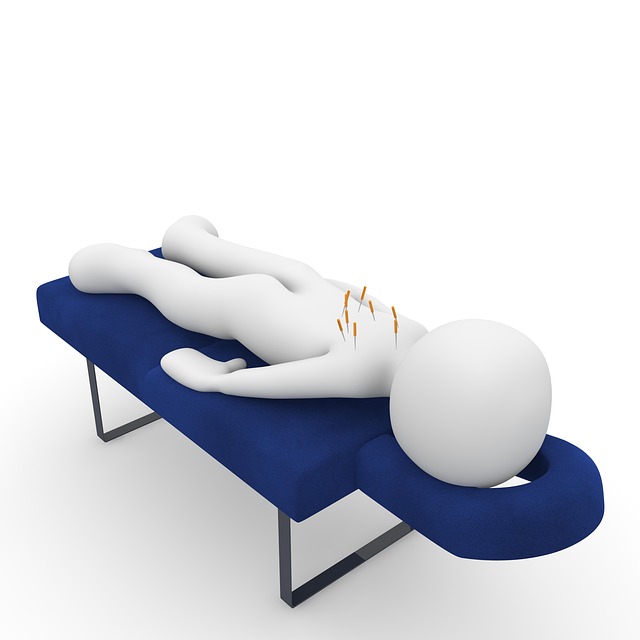Sleep is a critical yet often overlooked component of fitness and wellness plans. Adequate rest facilitates muscle repair, hormone regulation, and energy recharge, leading to improved training results, quicker injury recovery, and enhanced athletic performance. Creating an optimal sleep environment through comfortable bedding, cool temperature, and minimal noise & light enhances restorative sleep. A solid pre-sleep routine involving calming activities prepares the mind and body for rest. Tracking and adjusting sleep patterns using technology or journals allows individuals to make data-driven adjustments, further enhancing fitness and wellness plans and supporting peak physical performance.
Enhancing your fitness journey starts with optimizing sleep—a powerful tool often overlooked in wellness plans. This article unveils strategic insights to revolutionize your recovery process. We explore how quality sleep acts as a crucible for muscle repair and performance improvement. From crafting a serene sleep environment to implementing calming pre-sleep rituals, these strategies aim to align your fitness goals with restorative rest. Additionally, we guide you through tracking and tailoring sleep patterns to complement your fitness and wellness plans.
- Understanding Sleep's Role in Fitness Recovery
- Creating an Ideal Sleep Environment for Optimal Rest
- Implementing Effective Pre-Sleep Routines
- Tracking and Adjusting Sleep Patterns for Enhanced Wellness Plans
Understanding Sleep's Role in Fitness Recovery

Sleep plays a pivotal role in optimizing fitness and wellness plans, as it is integral to the body’s recovery process. During sleep, our bodies undergo essential repairs and rejuvenate, ensuring muscles repair, hormones regulate, and energy levels restore. This restorative process is crucial for athletes and fitness enthusiasts aiming to peak performance, as it enhances endurance, improves strength, and accelerates post-workout recovery.
Adequate sleep allows the body to release growth hormone, which facilitates muscle rebuilding and tissue repair. It also regulates cortisol levels, reducing stress hormones that can impede recovery. In the context of fitness and wellness plans, prioritizing sleep is a game-changer, as it translates into improved training outcomes, faster injury rehabilitation, and overall better athletic performance.
Creating an Ideal Sleep Environment for Optimal Rest

Creating an optimal sleep environment is a key strategy for athletes and fitness enthusiasts looking to enhance their recovery process, integral to any successful fitness and wellness plan. The bedroom should be a sanctuary designed for rest, keeping noise and light to a minimum. Investing in high-quality, comfortable bedding can significantly improve the quality of sleep, allowing your body to repair and rejuvenate.
Temperature plays a crucial role too; maintaining a cool environment supports deeper, more restorative sleep. Consider using blackout curtains to block any external light sources and minimize distractions. Additionally, keeping electronic devices away from the bed reduces exposure to blue light, which can disrupt your natural sleep-wake cycle. Creating this ideal setting facilitates optimal rest, ensuring you wake up feeling refreshed and ready to take on your fitness goals.
Implementing Effective Pre-Sleep Routines

Implementing a solid pre-sleep routine is a powerful strategy within your fitness and wellness plans to optimize recovery. This involves creating a calming and consistent environment that signals to your body that it’s time to wind down. Activities such as reading a book, practicing meditation or deep breathing exercises, and taking a warm bath can help lower stress levels and prepare your mind and body for rest.
By establishing a relaxing pre-sleep routine, you can enhance the quality of your sleep, which is essential for muscle repair, hormone regulation, and overall athletic performance. This simple yet effective step ensures that your body is in an optimal state to recover and perform at its best during training or competitive events.
Tracking and Adjusting Sleep Patterns for Enhanced Wellness Plans

In today’s fast-paced world, tracking and adjusting sleep patterns is a crucial component of any fitness and wellness plan. By utilizing wearable technology or sleep journals, individuals can gain valuable insights into their sleep quality and duration. This data allows for targeted adjustments to sleeping habits, ensuring optimal rest that supports peak physical performance. For instance, identifying consistent late-night screen time and its negative impact on slumber is the first step towards making positive changes.
Once identified, strategies like establishing a technology curfew, creating a relaxing bedtime routine, and optimizing sleep environments can significantly enhance overall wellness plans. These adjustments not only improve sleep quality but also help align individual sleep cycles with their natural circadian rhythms, fostering better recovery and performance during training sessions or athletic competitions.
Optimizing sleep is a powerful tool in every fitness and wellness plan. By understanding the critical role of sleep in recovery, creating a conducive environment, implementing routines, and tracking patterns, individuals can significantly enhance their athletic performance and overall well-being. Incorporating these strategies ensures that rest becomes an active component in achieving peak physical condition.
